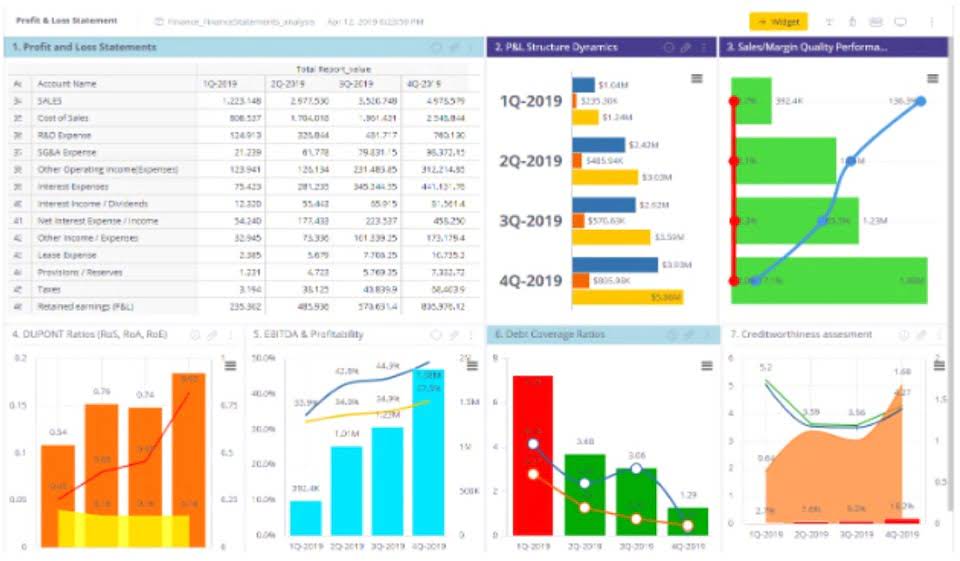Outsource your accounting to an entire team of accountants and your in-house employees will be liberated to square their focus on what they do best. These outside specialists do not require salaries, benefits, and other perks necessary to maintain the allegiance of in-house employees. Nor is there any risk that the outside specialists will flee to potentially greener pastures as can occur with in-house accountants. There is no sense investing your company’s limited money and time training in-house accountants only for them to walk right out the door for another job opportunity. Instead, opt for outsourced accounting services and your business will be locked into a contract that provides accounting services for a specific period of time.
- Remember, if you’re looking for investors, outside financing, or need to create financial projections, you will have to have an accurate estimate of your regular business expenses, categorized properly.
- Educating yourself about the common small business expense categories will make it much easier to determine what is and isn’t deductible at tax time.
- This statement can be attached to the Form W-8.In most cases, a foreign contractor is subject to U.S. tax on its U.S. source income.
- From small businesses to established enterprises, inDinero’s accounting services are handled by a team of fractional accountants, overseen by a controller, that completes all financial and recordkeeping tasks.
As a business owner, your impulse might be to keep your accounting under your own control, but the benefits of having an experienced accountant cannot be understated. One of the best reasons that many companies are outsourcing accounting instead of keeping it in house is to save money. Accounting services may not be cheap, but compared to the cost of keeping a full-time accounting staff, the cost is negligible.
The American Institute of Certified Public Accountants (AICPA) reports that the CPA pipeline is the weakest it’s been since 2010 and that 75% of today’s public accountants will retire within the next 15 years[2]. Combined with the Great Resignation—where millions of professionals across industries left their jobs—this lack of talent also leads to a lack of expertise as tenured accountants depart the field. But “outsourcing” simply means “hiring someone outside your company.” This includes freelancers, independent contractors, and anyone who is not specifically a W-2 employee of your company. When you sign on with AccountingDepartment.com, we select the right, trained bookkeeper to work from home for your company.
Tip #2: Code vendor invoices with the correct expense account
One handy feature in Zoho Books is the option to record an expense, record mileage, or record bulk expenses. Zoho Books also offers an excellent primer on how to track business expenses. Remember, if you’re looking for investors, outside financing, or need to create financial projections, you will have to have an accurate estimate of your regular business expenses, categorized properly.
- All of your company data, along with online bookkeeping software, records, and other financial data, is stored on our completely secure, off-site server through an ASP (Application Service Provider).
- Paro begins the process with an introductory call to learn about the scope of work your firm needs.
- That way, the accountants can quickly pull the necessary information without wasting your time and resources.
- More comprehensive and routine needs, such as accounts receivable/payable management (32%) and tax reporting and filing (30%), were the most affected.
You may not have realized just how much you can reduce your company’s carbon footprint by making the “green” decision of using online business services to help you manage your finances and more. Accounting outsourcing can save your company a lot of time, money and hassles. An outsourced accountant can be objective and give an outside perspective on how the business is financially operating and will have a lot of experience in handling different situations. If there is an accounting challenge you are facing, an outsourced accountant has likely seen it before.
Why You SHOULD Get Into Form 1040 Services w/ Trina Rozen
Opinions expressed on the pages of this website belong to the author and do not represent the views of companies whose products and services are being reviewed. Setting clear requirements and expectations right from the start is essential to avoiding future disputes. For that purpose, write up a document containing all agreed-upon terms and conditions before handing over your accounts to an outsourced firm. Considering all of the above, small businesses can expect to pay around $500 to $1,500 per month, whereas medium companies with advanced accounting needs have to cover around $1,500 to $5,000 every month.
How to Categorize Business Expenses
In the long-run, these solutions can provide the efficiency and expertise accounting firms bring to the table while also being cost-effective. Out of all the outsourcing options, businesses turn to firms for financial advisory services (54%) the most. AccountingDepartment.com’s tech-savvy team even goes to the extent of implementing integrated accounting software applications best suited for https://www.wave-accounting.net/ your unique business. Lean on our team of accounting specialists and you will rest easy knowing the entirety of your virtual accounting data is 100% secure at all times. We safeguard clients’ financial data by following nuanced protocols and procedures. Our 7-step plan is designed to facilitate a seamless, quick, and easy transition away from in-house accounting to outsourced accounting.
Pros and Cons of Outsourcing Your Bookkeeping
From basic bookkeeping to tax filing, hiring an outside expert can take a lot of stress off of your plate. Keep reading to learn why so many business leaders are turning to the pros for their accounting needs. As companies grow, they become more susceptible to financial errors and, in the worst cases, fraud.
Overview: What counts as a deductible business expense?
Plus, we don’t have to worry about committing errors on using software because we know that the accounting professionals to whom we outsourced our accounting concerns to are experts and can be trusted. Financial software can be complex and unintuitive when you are first learning to use it, and your accountant can help you implement these types of new financial technology into your reporting and daily workflow. https://accountingcoaching.online/ Read on for eight of the biggest benefits of outsourcing bookkeeping and accounting. And that includes confidentiality and only discussing company information with management-approved staff. There is no specific definition for “outside services” — it is a catchall term for tasks you paid an independent contractor to perform. The tasks you hire out to independents certainly qualify for this deduction.
With plans starting at $15 a month, FreshBooks is well-suited for freelancers, solopreneurs, and small-business owners alike. This list is not all inclusive, but should give you an idea of the https://personal-accounting.org/ meaning of “outside services.” Derek Gallimore has been in business for 20 years, outsourcing for over eight years, and has been living in Manila (the heart of global outsourcing) since 2014.
In fact, your online bookkeeper will not only speak your language—they will live in your time zone. If you tend to work late and prefer a bookkeeper in a different time zone so they can better fit your schedule, we can accommodate. But your bookkeeper will always be U.S.-based, with English as thier native language, and trained, certified, and tested in the accounting software you use, whether it’s QuickBooks or something else. You gain access to a team of highly qualified and trained professionals who use the latest technology and tools to ensure that your data is accurate and secure when you outsource your accounting and bookkeeping services. By outsourcing bookkeeping, you gain access to a team of professionals whose sole focus is to save you money and keep your financial records straight.




